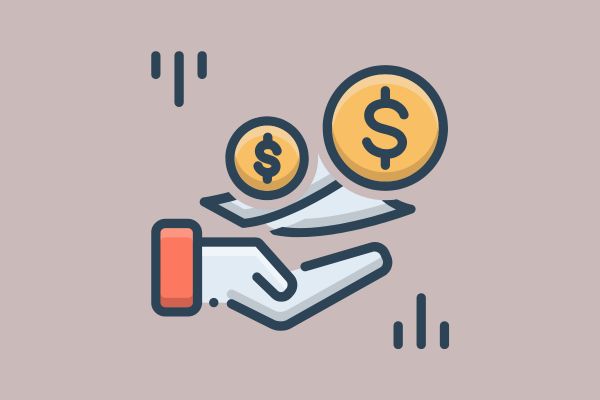Basic Salary of Officials and Public Employees: What Percentage of the Total Salary Fund Does It Account for When Implementing the 2024 Wage Reform?
What percentage of the total salary fund does the basic salary of officials and public employees account for when implementing the 2024 salary reform?
Based on Subsection 3.1, Section 3, Part II of Resolution 27/NQ-TW 2018 which outlines the content of the salary structure reform for officials and public employees (public sector) as follows:
- Basic salary (accounts for about 70% of the total salary fund):
- Abolish the current statutory pay rate and salary coefficients, and establish a basic salary amount specified in the new salary table.- Develop and promulgate a system of 02 new salary tables for officials and public employees based on job position, title, and leadership position, replacing the current salary table system; transition from old salary to new salary ensuring it is not lower than the current salary.
- Allowances (account for about 30% of the total salary fund):
+ Continue to apply concurrent allowances; seniority beyond the frame allowances; regional allowances; job responsibility allowances; mobility allowances; security, defense service allowances, and special allowances for the armed forces (military, police, cryptographic).
+ Combine professional privilege allowances, professional responsibility allowances, and hazardous and dangerous allowances (collectively referred to as professional allowances) applicable to officials and public employees in professions and jobs with higher than normal labor conditions and appropriate State preferential policies (education and training, health, judiciary, prosecution, civil execution, inspection, audit, customs, forestry, market management,...). Combine special allowances, attraction allowances, and long-term service allowances in areas with particularly difficult socio-economic conditions into difficult area service allowances.
+ Abolish professional seniority allowances (except for military, police, cryptographic to ensure wage correlation with officials); leadership position allowances (as leadership positions in the political system implement positional salary grading); party, political-social organization work allowances; public service allowances (as it has been included in the basic salary); hazardous and dangerous allowances (as hazardous working conditions have been included in professional allowances).
+ Specify new policies for allowances based on administrative unit classification for communes, districts, and provinces.
+ Consistently implement a monthly allowance fund quota for non-specialized activity persons at the commune level, in hamlets, and residential groups based on the regular expenditure rate of the commune-level People's Committee; simultaneously, regulate the maximum number of non-specialized activity persons based on each type of commune, hamlet, and residential group. On this basis, the commune-level People's Committee submits to the People's Council at the same level for specific titles entitled to allowances, whereby one title can undertake multiple tasks but must ensure the quality and efficiency of assigned work.
- Add bonuses (bonus fund accounting for about 10% of the total annual salary fund, excluding allowances).
Therefore, according to the above content, the basic salary of officials and public employees accounts for about 70% of the total salary fund when implementing the expected salary reform from July 1, 2024.

What percentage of the total salary fund does the basic salary of officials and public employees account for when implementing the 2024 salary reform?
What is the specific roadmap for salary reform for officials and public employees according to Resolution 27?
Based on Resolution 27-NQ/TW 2018, specific objectives for salary reform from 2021 to 2025 and vision to 2030 are outlined as follows:
(1) For the public sector:
- From 2021, apply new unified salary policies for officials and public employees, armed forces in the entire political system.- In 2021, the lowest salary of officials and public employees will be equal to the average lowest regional salary of the enterprise sector.- Periodically adjust the salary level in line with the consumer price index, economic growth rate, and the state's budget capability.- By 2025, the lowest salary of officials and public employees will be higher than the average lowest regional salary of the enterprise sector.- By 2030, the lowest salary of officials and public employees will be equal to or higher than the lowest salary of the highest region of the enterprise sector.
(2) For the enterprise sector:
- From 2021, the state periodically adjusts the regional minimum wage based on the recommendation of the National Wage Council. Enterprises will implement salary policies based on negotiation and agreement between employers and employees, as well as collective employee representatives; the state will not directly intervene in the salary policies of enterprises.- Manage labor and salary in state-owned enterprises by implementing wage cost quota linked to business tasks of enterprises by 2025 and moving towards task-based wage allocation in 2030.
When will the salary reform be implemented according to Resolution 27?
On September 19, 2023, National Assembly Chairman Vuong Dinh Hue made a closing speech at the Vietnam Socio-Economic Forum 2023, emphasizing the early fundamental implementation of salary policy reform in 2024.
The National Assembly Chairman also emphasized the early fundamental implementation of salary policy reform in 2024, which is also a boost for the labor market, contributing to stimulating domestic consumption.
"This is a reform, not just a regular salary increase. If nothing changes, we can apply it from July 1, 2024."
Therefore, the salary policy reform is expected to be implemented from July 1, 2024.
LawNet